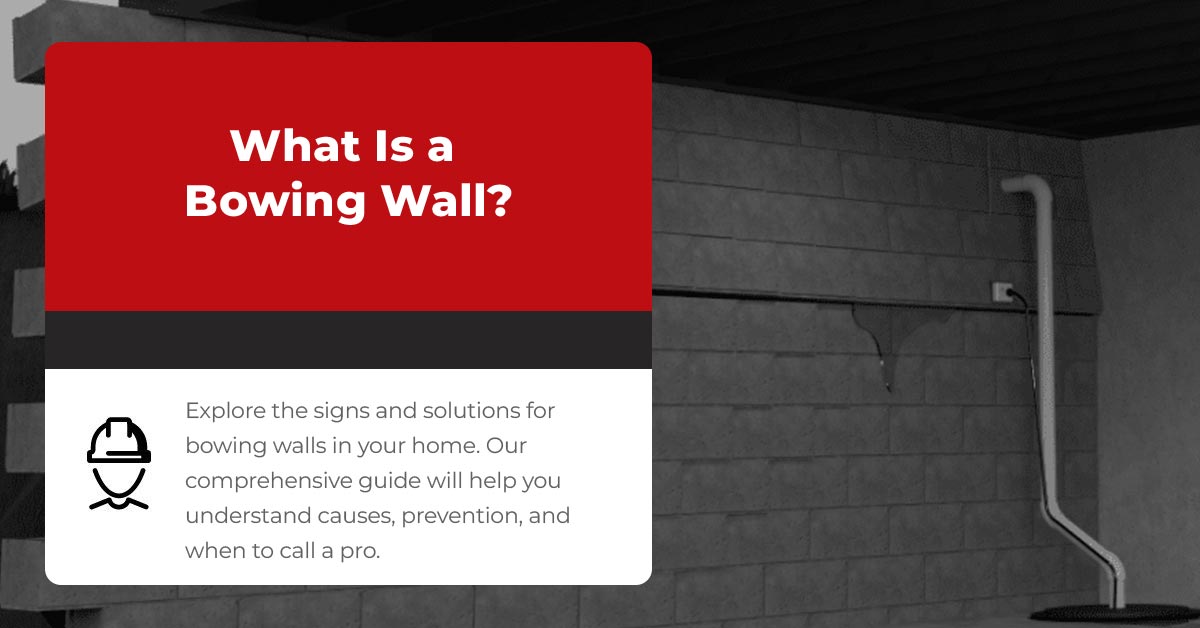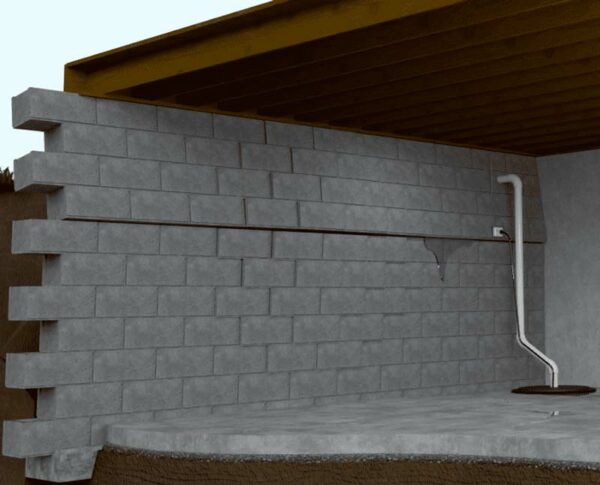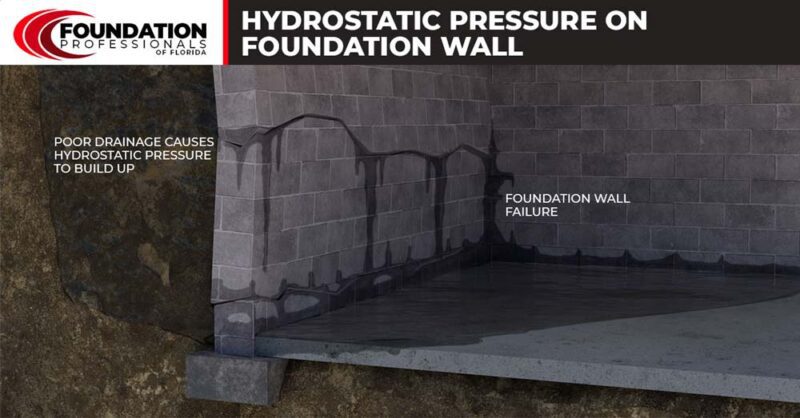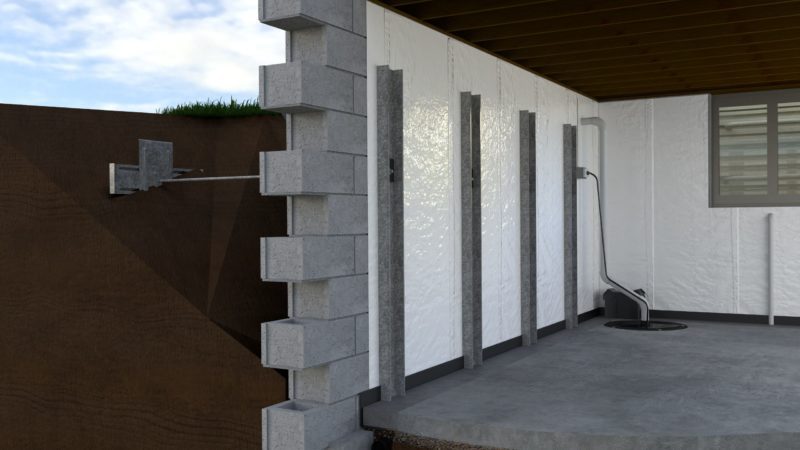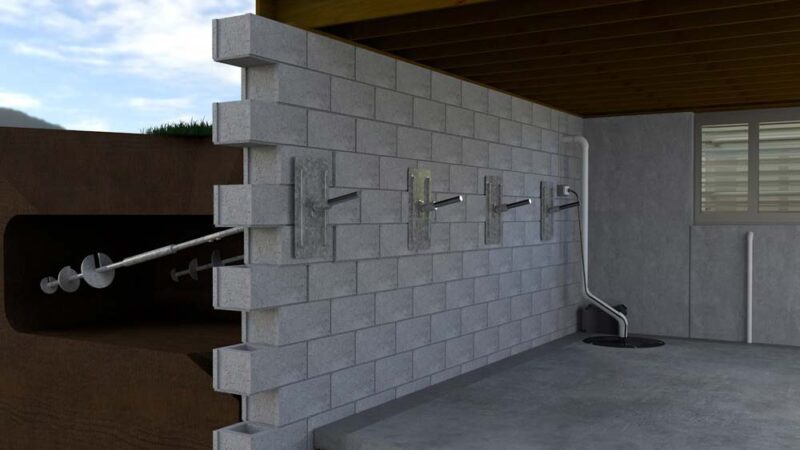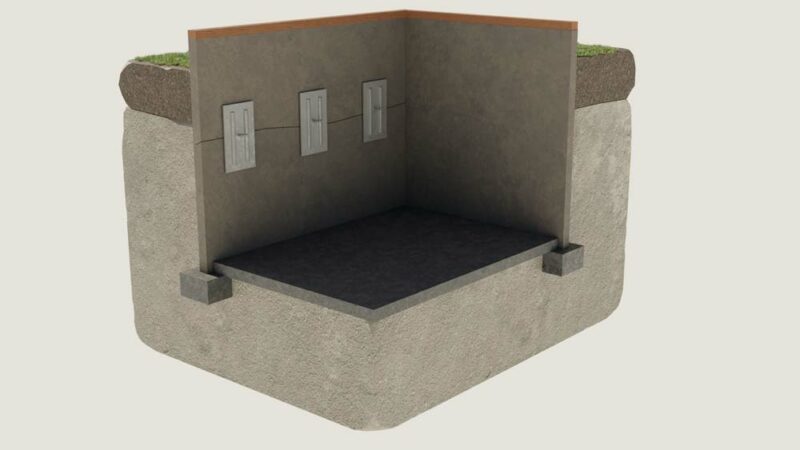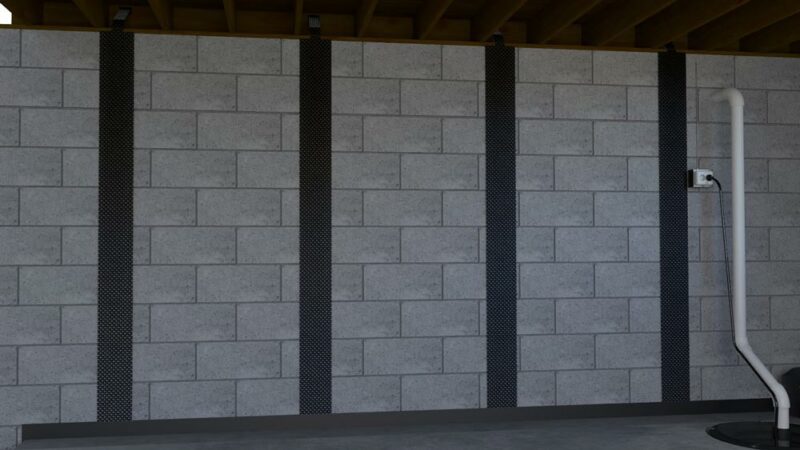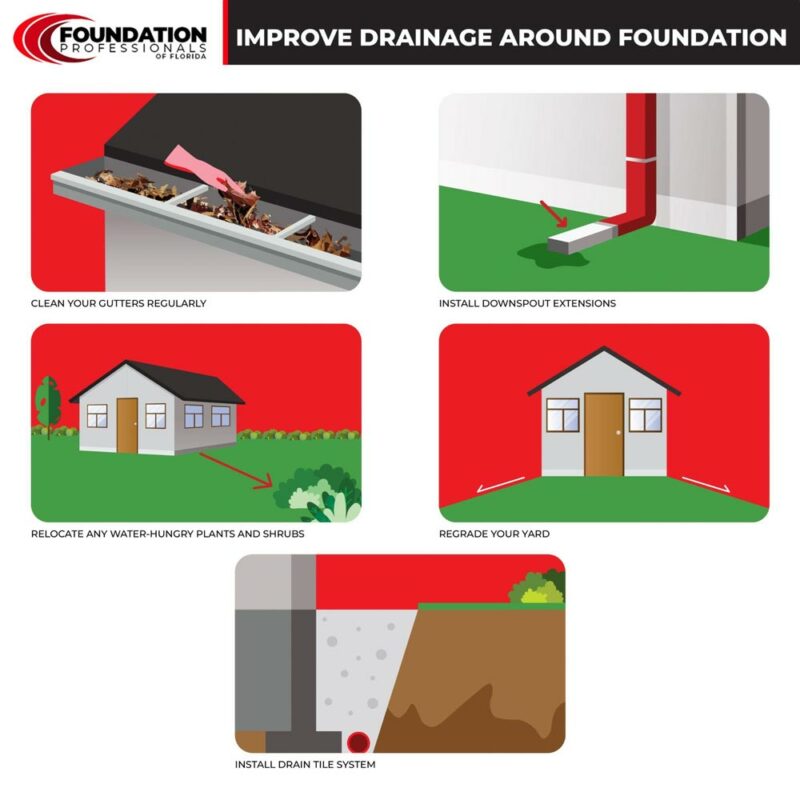A bowing wall is a clear indicator that the structural integrity of your home has become compromised. This sign of structural failure can occur at any level of your home, but it is most common in basement areas. This article aims to give you a clear understanding of what a bowing wall is, why it occurs, and what you can do to prevent this issue from occurring in your home.
What Does a Bowing Wall Look Like?
A bowing wall is easy to detect after a brief visual inspection. In most cases, the face of an uncompromised wall will be vertical with no curves or bends. In contrast, a bowing wall will have a distinct inward curve that you should notice right away. Most bowing walls can also exhibit cracks in and around the areas where the bowing is taking place.
What Causes a Foundation Wall to Bow?
Walls that hold back soil, such as retaining and basement foundation walls, are most likely to experience bowing. When these walls bow, the source is often a build-up of hydrostatic pressure in the soil behind the wall. Hydrostatic pressure pushes against the wall and if it isn’t relieved, it can cause the wall to deform in several ways, one of which is bowing. This phenomenon can also cause cracks in the wall.
If a wall has become bowed or cracked due to hydrostatic pressure, the issue will only worsen over time. Since bowing walls don’t resolve independently, seeking assistance when you discover one in your home is crucial to prevent further damage.
Repairing a Bowing Wall
Bowing basement walls pose a significant structural concern for homeowners, indicating soil pressure exceeding the wall’s capacity to withstand it. Fortunately, advanced engineering solutions such as c-channel wall anchors, helical tiebacks, wall plate anchors, and carbon fiber straps offer effective methods to stabilize and straighten compromised walls.
C-channel anchors are affixed to the wall and anchored to the floor joists, countering the inward force and averting further bowing.
Helical tiebacks are essentially screw-like devices that are drilled through the wall and into the soil outside, providing horizontal reinforcement that pulls the wall back to its original position. Once installed, the tieback will be cut flush to the wall plate anchor.
Wall plate anchors are installed outside the basement wall and attached to the foundation. The anchor is attached to a steel plate that is inserted into the ground, and then to the wall plate that is installed on the interior of the foundation wall. The wall plate anchors provide a stable support system that prevents further movement of the basement wall.
Carbon fiber straps are made of high-strength materials that are designed to resist bending and deformation. These straps are installed on the interior walls of the basement and are attached to the wall with a strong epoxy adhesive. Once installed, the carbon fiber straps provide additional support to the wall by distributing the load across a wider area. This helps to prevent further bowing, cracking, and shifting of the wall.
Prevent Your Basement Walls from Bowing
While it’s a relief to learn there are reliable means by which a foundation professional can resolve a bowing wall, the best approach is to prevent your walls from bowing in the first place. The good news is that you can achieve this by ensuring the ground around the foundation remains dry. Here are some ways to do this:
- Improve drainage around the foundation – Since hydrostatic pressure is a leading cause of bowing walls, improving your drainage system is one of the best preventive measures. A well-functioning drainage system efficiently collects water in and around your foundation and conveys it away from your home. A foundation professional will be able to tell you whether your foundation drainage system is lacking in any way.
- Regrade your yard – Ensure the land around your home has a distinct slope away from the foundation. This will prevent groundwater from draining toward the foundation.
- Clean gutters regularly – You don’t want water running down the side of your house and soaking the ground around the foundation.
- Install downspout extensions – Downspout extensions guarantee that rainwater moves well away from your home before release.
Lastly, it’s crucial to perform regular foundation inspections. During these inspections, you should watch for cracks or other irregularities in your basement walls. Noticing cracks and other issues early will help prevent costly foundation damage.
Hire an Experienced Foundation Professional
The best way to prevent bowing walls and other foundation problems is to contact a trusted foundation repair team that can help you diagnose and resolve any structural issues with your basement walls.
At Foundation Professionals of Florida, we are experts when it comes to cracked and bowed foundation walls. If you are dealing with either of these issues, contact us today to learn more about how we can help you.

